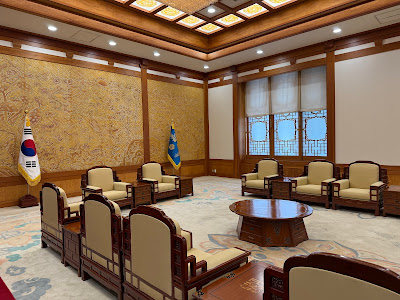Inside the Blue House: Between Gyeongbokgung and the Future of Korea’s Presidency
Between Gyeongbokgung Palace and the Blue House (Cheong Wa Dae) lies a single road — a quiet but symbolic boundary between Korea’s royal past and modern presidency. Just across from the Blue House’s main gate stands Shinmumun, the northern gate of Gyeongbokgung. Years ago, this gate was guarded around the clock by soldiers from a military unit stationed inside the palace grounds.
Only after that unit, the Capital Defense Command, was relocated could the northern area of Gyeongbokgung finally open to the public. It was a subtle but meaningful shift — a historical space once protected for power now became accessible for the people.
A Presidential Shift and the Return to the Blue House
During the previous administration, Korea’s presidential office was moved from the historic Blue House to a new site in Yongsan. For the first time in modern history, the Blue House — once shrouded in secrecy — opened its gates to the public.
But with the early conclusion of that administration, news is now swirling that the presidency and presidential office will soon return to their symbolic home. Rumor has it that President Lee Jae-myung, the newly elected leader, is expected to move into the Blue House within the next few months. Restoration and refurbishment work is likely already in motion to prepare for his arrival.
A Glimpse Inside: The Public Side of Power
The lighting design of the Blue House balances modernity and calm. Linear LED panels embedded in long, rectangular ceiling fixtures ensure the rooms are well-lit, while small chandeliers cast a warm, gentle glow over the interiors.
Curated Heritage: Korean Touches in Every Detail
The Blue House’s interior decor is intentionally and delicately curated to reflect Korean aesthetics. Among the most iconic items is the folding screen (byeongpung) — a traditional art form that combines calligraphy or painting with symbolic presence. Though not commonly used in modern homes, the folding screen remains a powerful motif in representing Korean tradition.
Looking Ahead
This blog entry offers just a glimpse of the Blue House's interior spaces. In future posts, I’ll explore more scenes — both inside and outside — that reveal how this historic building continues to evolve with the changing tides of Korean politics.
















No comments:
Post a Comment